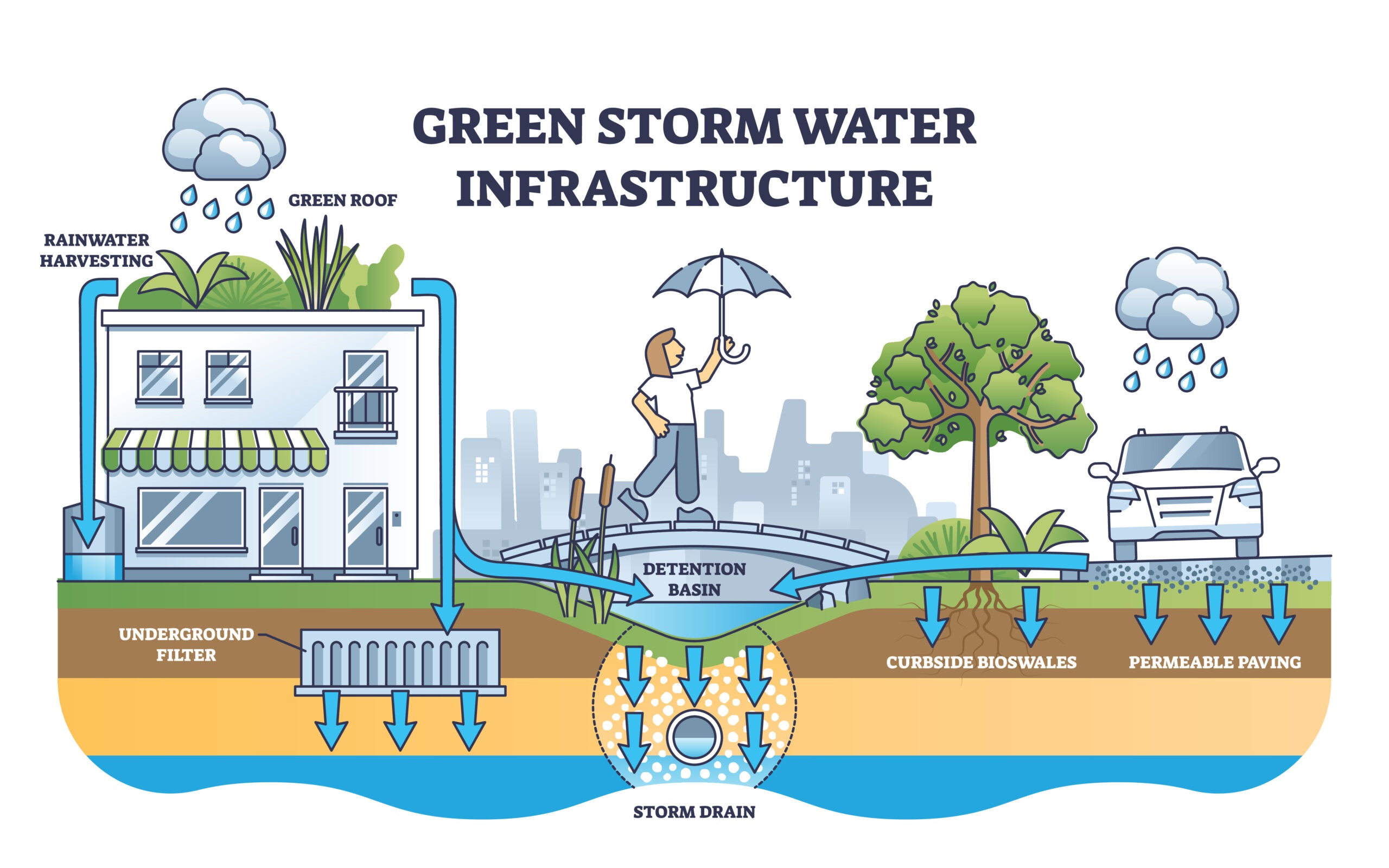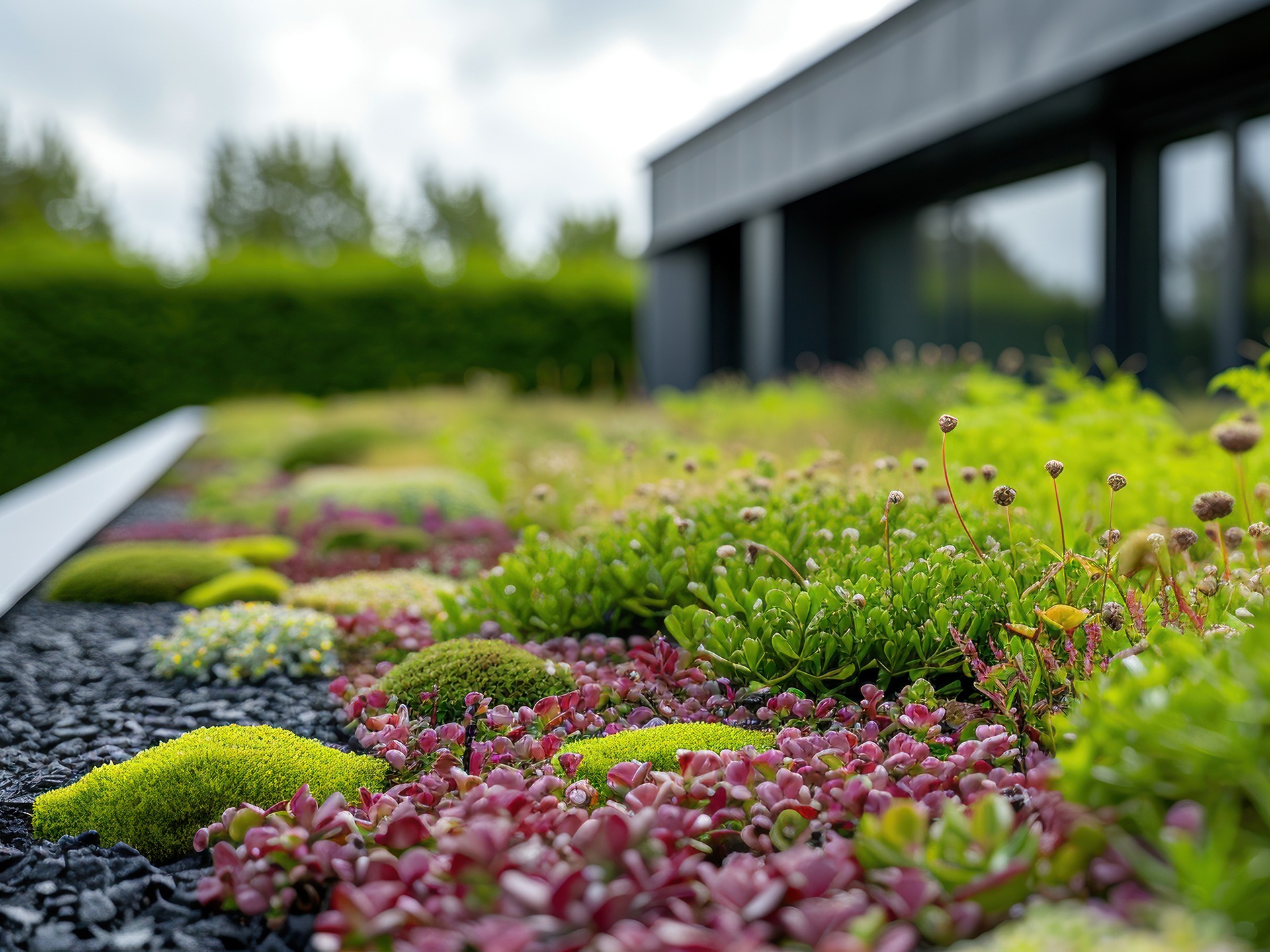What are sustainable drainage systems (SuDS)?
Sustainable drainage systems are a hot topic in landscape design and planning. The rules are changing to make them compulsory in some new developments too. Here’s what you need to know about SuDs and how to create your own sustainable drainage system to prevent flash flooding
According to government figures, rainfall in the UK is increasing and also increasing in intensity. This means surface-water flooding is likely to pose a greater risk in the future, particularly in urban areas where much of the ground is paved.
What are sustainable drainage systems (SuDs)?
Sustainable drainage systems are a natural approach to managing the drainage in and around properties and other buildings.
There are different types of SuDs that do the job in different ways. These include:
- Source Control – this measures deal with the run-off at, or close to, the surface where the rainfall lands.
- Site control – this measures surface water run-off from larger areas, including housing estates, major roads or business parks.
- Regional control – this measures downstream of source and site controls deal with the gathered run off from a larger area. These use the same concept as the smaller SuDs but can cope with bigger volumes of water.
Rainwater that passes through smaller SuDs can feed into large ones which deal with the gathered run-off from a wider area. It is best to connect the flows between the SuDs components by using filter drains, ditches or swails and avoiding the use of pipes.
Surface-water flooding
Surface-water flooding, also known as pluvial flooding, occurs when a downfall overwhelms the capacity of drains and sewers to cope with the volume of water. Unable to drain away or soak into the ground, the water floods the ground. A secondary, increasingly common, and very unpleasant problem can occur when flash floods overwhelm combined sewers. Therefore, washing untreated sewage into rivers and the sea.
There are many different ways to design and re-engineer urban landscapes to reduce the risk of these things happening. The aims of these sustainable drainage measures are to allow water to infiltrate into the ground more easily. From where it can seep down through the subsoil to the water table; find means to retain water, temporarily or permanently, for example, in ponds, so that it can dissipate more slowly. At the same time, perhaps even providing water habitats that are attractive to wildlife; and add engineered solutions to move water away, such as pipes or gulleys or channels.
How do sustainable drainage systems (SUDs) work?
Sustainable drainage systems work by slowing and holding back the water that runs off from a site. This allows natural processes to break down pollutants.
Upon designing a sustainable drainage system, you should think about the number of connectable components. The more likely the run off is to be contaminated, the more stages of treatment should be included. This is known as the treatment train.
You can also include source control measures to capture and treat run off close to where it lands. You can connect a number of source controls to a site control measure, such as a detention basin. The overflow from the site control measures can be finally treated in a regional control SuDs measure, before discharging to the water environment.
Sustainable drainage methods
There are many ways of creating sustainable drainage, depending on where the drainage needs to be installed. Here are some of the common choices.
Permeable surfaces, rather than hard, impervious surfaces such as concrete, allow water to pass through them. Options include gravel, permeable paving and permeable resin-bound driveways. Green and blue roofs can be installed, designed to retain rainwater.
Rain gardens can be fed by rainwater from downpipes and are created using planting and landscaping that can cope with inundation. Rainwater harvesting can be used to collect rainwater from the roof in rain butts or tanks for use in the garden or even to flush toilets.
Larger options for bigger areas include swales (broad channels in the landscape used to absorb water run-off) and detention basins, retention ponds and wetlands. These can all absorb and hold run-off water and even filter out pollutants.
Combinations of these are put together to form sustainable drainage scheme(s) known as SuDs.

- Image credit: Adobe Stock
Improving infiltration
Jo Parker, from the Institution of Civil Engineers, explains, “SuDs help improve infiltration, or the ability of water to be absorbed into an environment. They’re important because the more water is absorbed by the environment, the less likely floods, overflows, and other associated issues are.
“SuDs work by helping to slow down the flow of water. Water from rainfall, or surface water, can be absorbed by permeable surfaces, like grass, but many roads and paved surfaces are impermeable, and water just slides off. The natural cycle of absorption by plants etc, is bypassed, but that water still has to go somewhere. It usually runs off and ends up in combined sewers, where it can contribute to overflows released into the environment via rivers and streams.
“This is where SuDs come in. They’re designed to minimise the built environment’s impact on the natural water cycle by slowing surface water’s runoff. Engineered SuDs like permeable paving manage runoff, and landscaped SuDs like green roofs absorb water, enhance spaces and contribute to biodiversity, so offer benefits beyond just water management.”
New SuDs rules
SuDs are in the news because the government looks set to put into force a law mandating SuDs, which has been on the statute books for a while. Schedule 3 of the Flood and Water Management Act 2010 makes provision for SuDs to become mandatory for new housing developments above a certain size. The Act includes a framework for the approval and adoption of drainage systems; an approving body (the local authority, acting in its new role of SuDs Approval Body – SAB); and national standards for the design, construction, operation, and maintenance of SuDS. It also makes the right to connect surface-water run-off to public sewers conditional upon your drainage system being approved before any construction work can start.
Wales first
The provisions have been implemented in Wales since 2019. There, all developments bigger than one dwelling or more than 100m2 must include a sustainable drainage system that meets statutory SuDs standards. And, before work can begin, approval of the SuDs plan must be sought from the local SAB.
SuDs in England
In 2023, Defra published the Sustainable Drainage Systems Review, to look at the costs and benefits of fully implementing the SuDs laws in England. The Review suggested the work to set up SABs and implement SuDs standards should go ahead. And it looks likely this will happen in 2024.
Current planning policy already requires developments of more than ten homes, and those in flood-risk areas to have SuDs. The Review recommends developments under 100m2, and single buildings under 100m2 should be excluded from the regulations, as they are in Wales. So small-scale self-builders should be off the hook, though there is always a chance that planners will require a SuD in a flood-risk area.
Slow the flow
As we have seen, there are reasons other than the statutory to think about adopting more sustainable drainage. Be it a desire to help prevent flash floods and storm-drain overflows, or to make better use of rainwater. However, as a new-builder or property owner, there are lots of things you can do to manage rainwater drainage more effectively and sustainably.
The sustainable drainage methods above should give you some ideas to start with. You’ll find lots of useful information on the website of Slow the Flow, a charity dedicated to education about natural flood management and sustainable drainage.
You can find information about planning permission requirements for driveways and patios on the Planning Portal.
READ MORE









